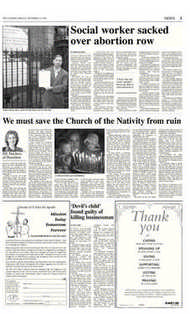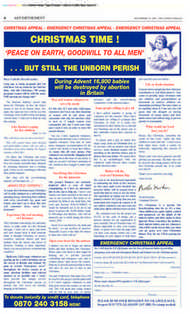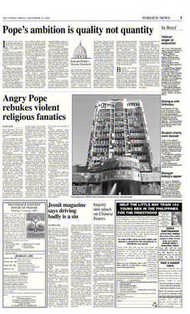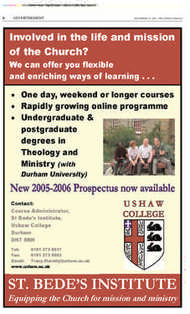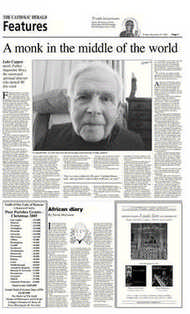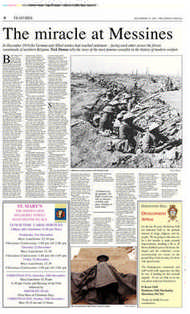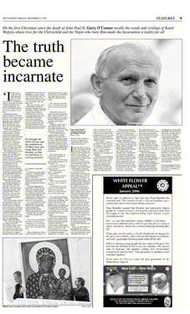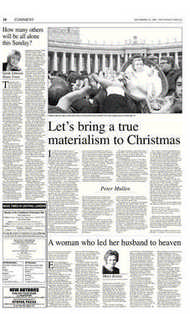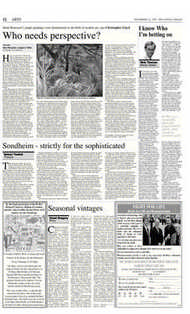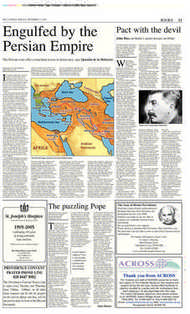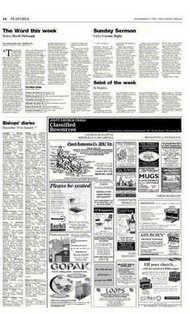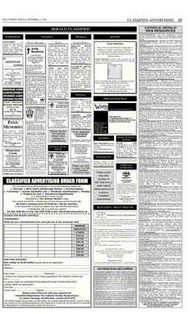Page 7, 23rd December 2005
Page 7

Report an error
Noticed an error on this page?If you've noticed an error in this article please click here to report it.
Tags
Share
Related articles
Potters Bar To New York
Aii? Raid Damage
Air Raid Damage
Voluntary Help Restores Kentish Village Church
Three Priests
Southwark Lost Its Cathedral And
A monk in the middle of the world
Fr Augustine Hoey was giving a confirmation class in the presbytery when the bomb hit. The V-2 rocket obliterated the house, the adjoining church and a nearby block of flats, killing more than 50 people. After the smoke had cleared Fr Hoey was astonished to find that he was still alive. And his rescuers, too, were amazed when they pulled him from the rubble unhurt, except for a cut to the head that required four stitches.
It was not the first time that Fr Hoey had survived against the odds. He suffered three attacks of pneumonia before the age of three. Each time, doctors predicted that he would die. During one crisis he actually felt himself leaving his stricken body and floating in the room above his sickbed. He looked down on his mother, who appeared to be pulling him back into his body inch by inch, preventing his spirit from slipping away.
No doctor would have expected Fr Hoey to reach the age of 90. But yesterday he did. Tellingly, he chose to celebrate the occasion quietly at Westminster Cathedral, rather than with Bucks Fizz and balloons. He hoped, modestly, that people would not make a fuss over it.
On the day that I visit him he is annoyed that news of the celebration has leaked out, thanks to the Times newspaper. In its daily birthdays column a certain “Father Augustine Hoey, Benedictine oblate, retreat conductor, spiritual counsellor and author” appears, sandwiched between Woody Allen and Bette Midler. Unfortunately, the announcement is three weeks early.
Fr Hoey lives in a home served by the Little Sisters of the Poor near the Oval cricket ground, where he has a cosy room, immaculately decorated with icons and delicately carved wooden boxes. He rests in an armchair surrounded by a cluster of cushions. I am immediately struck by his face, which has the soft radiance of a saint’s face on a prayer card and seems old and young at the same time. There is little trace of the physical suffering that marked his childhood. After the triple bout of pneumonia his health was so frail that he was not allowed to attend school and was educated instead by private tutors. Doctors advised his mother to take him to the south of France during the long winter months, but the family had to stay in Leeds, where his father was a wealthy industrialist. The boy grew up in an observant Anglican household, surrounded by pious maiden aunts.
“My mother, every night after I’d been put to bed, would read Arthur Mee’s Bible stories for children,” Fr Hoey recalls. “Every story was illustrated with a glossy colour print. It must have made a very deep impression on me because when the lessons are read I still see the pictures.” His highly restricted childhood ended only after he won a place at Oxford to study history. It took him a while to adjust, but he gravitated to the dramatic society, where he picked up skills that were to prove remarkably useful in his later priestly life.
He trained for the Anglican ministry at Cuddesdon, outside Oxford, and was ordained by the future Archbishop of Canterbury, Geoffrey Fisher. He was then posted to Hackney Wick, East London, where he remained throughout the war and where he survived the “buzzbomb”attack.
Fr Hoey rose to prominence in the Church of England thanks to a brilliant idea. He would preach inner-city missions, but rather than just standing in the pulpit he would go out on to the streets, accompanied by the congregation who would re-enact Gospel scenes dressed in robes and sandals. These “tableaux”, as Fr Hoey calls them, often had a profound impact on the local population. He shows me a scrapbook of blackand-white photos from a mission in Leeds. The fresh-faced priest stands preaching in a narrow terraced street, while local lads march in full Roman kit next to a white-robed Jesus struggling under the cross.
“The best set of photographs were taken in the Old Kent Road in courtyards surrounded by blocks of flats,” he says. “They make excellent theatres because people come out on to the balconies.” This theatricality was often heightened by the presence of the Kensitites, militantly Low Church Anglicans who tried to disrupt the tableaux with songs and chants.
But in addition to his public life, Fr Hoey had an intense private life of prayer. And so, after the war, he went to test his vocation at the Community of the Resurrection in Mirfield, Yorkshire, which was then at the cutting edge of Anglo-Catholic monastic life. After the novitiate he was posted to South Africa, where he stayed for seven years, at the height of apartheid, living in a black township in Johannesburg and in tribal lands. When he returned to Mirfield, in the early 1960s, it was as prior. He combined the duties of that office with preaching at parish missions and retreats for the laity and clergy.
But amid all this activity Fr Hoey’s true desire was to live a cloistered life of prayer. The community allowed him, briefly, to live completely enclosed at Mirfield; it then encouraged him to live as a contemplative in the inner city, first in a tower block in Manchester and then in the old docks of Sunderland. Countless people, including a young Rowan Williams, visited him, joining in daily prayer and seeking spiritual direction.
From all this, you might conclude that prayer came naturally to Fr Hoey. But he insists that he has never found it easy “but always felt drawn to it”.
At the age of 78 Fr Hoey made a decision that surprised him not only him but also many of the Anglican clergy who had sought his guidance: he became a Catholic. Of course, as an Anglo-Catholic he already believed that he was a Catholic, just not of the Roman variety.
“We looked to Rome for everything except the Pope,” he explains. “Women’s ordination was a cathartic thing for me... but it was really the question of authority. It was that the Church of England had acted on its own and made the quest for unity so difficult. It seemed to think that it was more important then ecumenism – which I didn’t.” Fr Hoey approached Cardinal Basil Hume, who decided that he should be received in a public ceremony, becoming the first senior Anglican to do so following the General Synod vote.
Cardinal Hume also recognised his deep attachment to the religious life. But as Fr Hoey was in his late seventies there was no question of him entering the novitiate again. Hume found a novel solution: Fr Hoey would make a lifelong oblation and then be permitted to wear the habit of a Benedictine monk. “You’ve worn a religious habit for 50 years,” the Cardinal said to him, “and you don’t to take it off now, do you?” Even at the age of 90 Fr Hoey has no plans for retirement. He intends to continue preaching and giving retreats, even though he still clearly longs, deep down, for a life given over completely to contemplation.
“I believe that the cloistered orders, like Tyburn, are the very heart of the life of the Church,” he says. “Without those great centres the Church would collapse. Those centres are like stones that are thrown into the water: they just ripple out and out. We shall only know in the next life the full extent of their influence.” Fr Hoey says that it is only now that he is in his nineties that he can look back on his life and see God’s providential plan.
“It’s only when you’re old and you begin to look back that you think, goodness!” he says, after telling me the story of how he survived the V2 bomb.
Fr Hoey’s life itself is a remarkable story of survival and the triumph of grace. Even so, he was probably right to mark his birthday with a quiet celebration. If he were to gather together all the people whose lives he has touched during his ministry, both Anglican and Catholic, there wouldn’t be a venue in Britain large enough to hold them.
blog comments powered by Disqus




